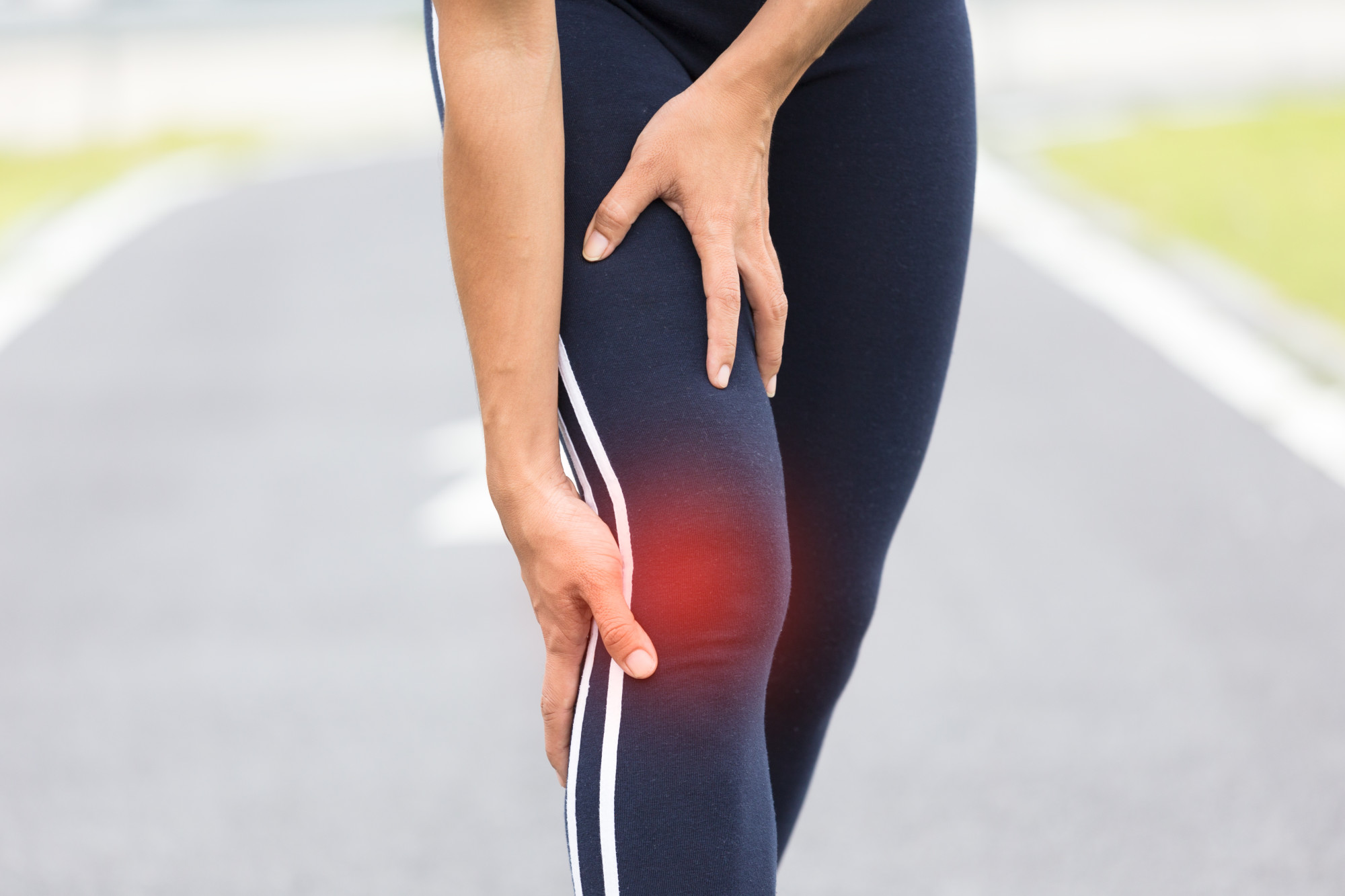
All runners have one pressing question in common:
“How do I protect my knees when running?”
After all, a high-impact sport such as running has to have a detrimental effect on the knees, right? One knee pain condition, patellofemoral pain syndrome, is even referred to as “runner’s knee.” So it might make you think twice about taking that morning jog if you’re worried about protecting your legs.
There’s good news, however.
Running isn’t bad for the knees—running incorrectly is. What that means is you can stop potential pain from becoming an issue for you. If you follow the tips below, your chances of experiencing knee pain are far less than someone who throws on a pair of shoes and goes with no thought or intention to their steps.
“How Do I Protect My Knees When Running?” The Answers Are Here
There’s a simple solution to preventing knee pain: practicing proper form.
What is the proper running form, exactly? Have I been doing it wrong this whole time?
Probably not—but it doesn’t hurt to get a refresher. Compiling tips from experts, the internet, and Run All the Way (to name a few), we’ve brought you a comprehensive running guide. Keep reading.
Stay off the Heel
This tip is perhaps the most important. Heel-stopping during your run is one of the most significant contributors to knee pain.
It’s essential to try to land mid-foot. Doing so prevents your heel from landing first, where it brakes your stride and puts impact and pressure on the knees, forcing them to absorb the shock. Knee pain might not develop immediately if you run like this, but it’s undoubtedly going to be an issue over time.
Avoid stepping past your knees, which tends to happen if you have more considerable strides. Shorten your stride, keeping your body leaning forward and legs behind you. Bonus: shorter strides actually help you run faster!
Keep a Microbend in the Knees
A straightened leg while running isn’t only detrimental for your knees, but it’s terrible for your back and hips, too.
If you land with partially bent knees, as you’re supposed to, your foot absorbs most of the shock, protecting the upper parts of the leg and body. Landing with a locked leg transmits the shock of the impact throughout the knees, hips, and back, causing that dreaded knee pain—so be mindful of the level of straightness in your legs.
Let Your Toes Point the Way
If you’re not sure how to test this for yourself, have someone watch you while you run.
Do your toes point either inward or outward? Or do they point straight, leading your way?
The ideal running stance would have your toes pointing forward with the rest of your body following. It might take a conscious effort to correct your posture, but if you’re a serious runner, you’ll need to focus on having your toes pointing forward.
Keep Your Knees Low and Body Leaning Forward
High knees are an excellent way to practice sprinting—or do a quick cardio warm-up. However, high knees are not a sustainable practice for dedicated runners.
Instead, it’s crucial to keep your knees low, in line with or below the hips, as they fall behind you.
This point nods again at keeping the legs behind the body when running, rather than in front of you. If you run with high knees, they’ll naturally fall in front of you, leading your stride. With low knees (and high heels), you’ll be able to lead with your chest and body, taking impact away from the legs.
Take Breaks If You Experience Pain or Discomfort
If you’re a consistent runner, your legs deserve rest days. This recovery process can help keep your legs in good condition.
If you feel like you’re inactive, don’t—even taking brisk, 10-minute walks can act as an excellent recovery for your body. In addition to walks, you can cool your legs by taking ice baths (or, at least, cold water showers), and repeat as needed.
Other recovery tactics include receiving or giving yourself massages to avoid leg stiffness, as well as to promote mobility and flexibility.
Don’t be afraid of taking recovery days often. You’ll perform that much better on your next running day.
Refresh Your Running Shoes
Are you running with the same running shoes you’ve had for years—your favorite, go-to pair? If so, it’s time to retire them and get yourself a brand-new pair of fresh running shoes.
According to experts, runners should replace their shoes every 500 to 750 kilometers. In mileage, that’s about 300 to 500 miles. Depending on how often you run, one pair should last you about four to six months (for a person running twenty miles a week).
Some lighter-weight models, which are increasingly popular, might need to get replaced even more often—about every 250 to 300 miles.
Many runners keep track of their runs through an app or running notebook. So, take a peek at yours and see if you’ve logged enough miles to warrant a new pair.
Now You Know How to Prevent Knee Pain When Running
Using the above tips and guidelines, your running experience should be much more pleasurable—no pain included.
Plus, you’ll have an answer for your running buddies when they ask you, “How do I protect my knees when running?” The answer doesn’t have to be complicated. It’s all about practicing a mindful form that prevents your feet from acting as brakes and your knees from acting as shock absorbers.
If you enjoyed this article, you’ll appreciate the rest of what our blog has to offer. Keep scrolling the site before you leave!

